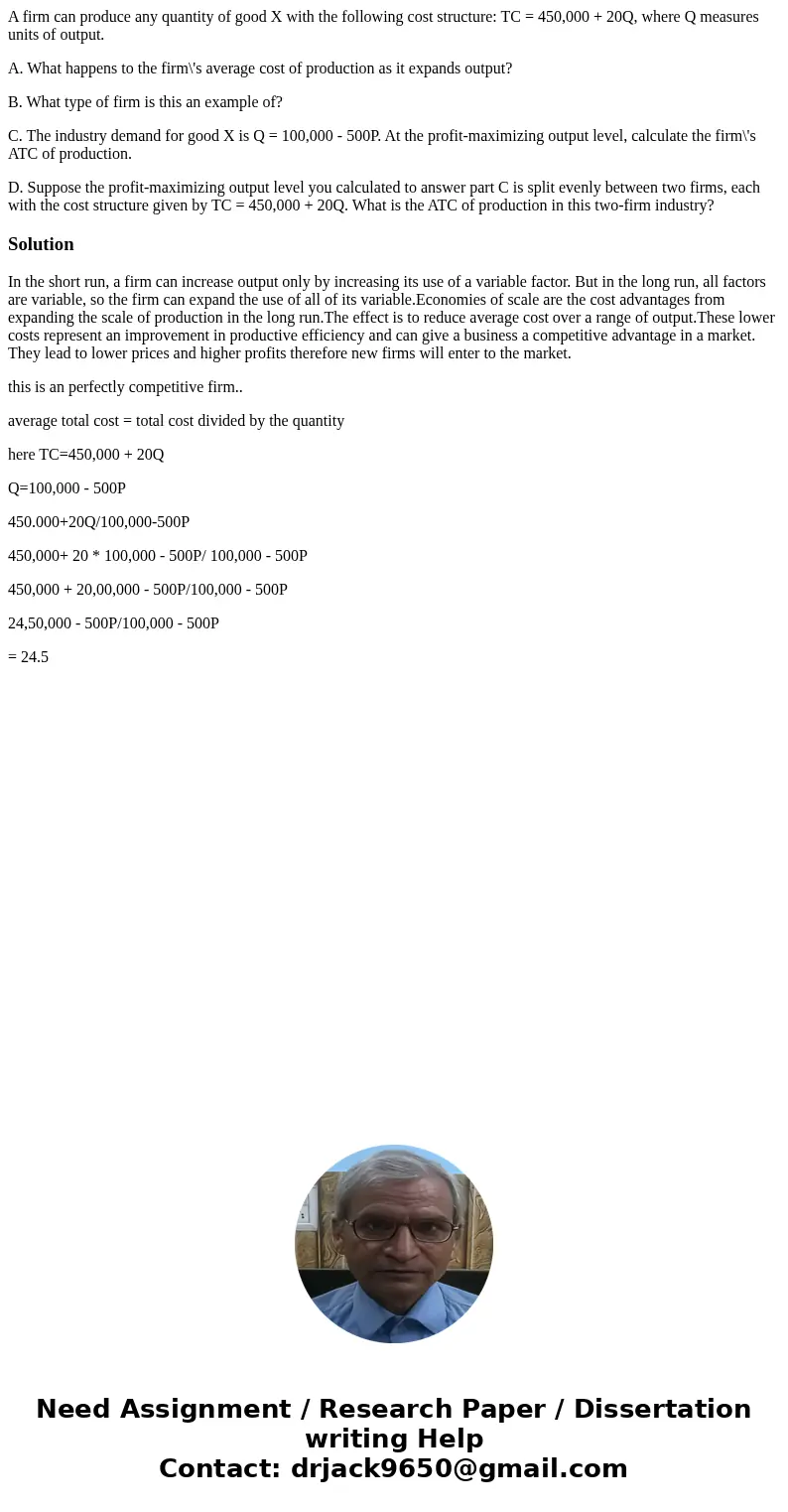A firm can produce any quantity of good X with the following
A firm can produce any quantity of good X with the following cost structure: TC = 450,000 + 20Q, where Q measures units of output.
A. What happens to the firm\'s average cost of production as it expands output?
B. What type of firm is this an example of?
C. The industry demand for good X is Q = 100,000 - 500P. At the profit-maximizing output level, calculate the firm\'s ATC of production.
D. Suppose the profit-maximizing output level you calculated to answer part C is split evenly between two firms, each with the cost structure given by TC = 450,000 + 20Q. What is the ATC of production in this two-firm industry?
Solution
In the short run, a firm can increase output only by increasing its use of a variable factor. But in the long run, all factors are variable, so the firm can expand the use of all of its variable.Economies of scale are the cost advantages from expanding the scale of production in the long run.The effect is to reduce average cost over a range of output.These lower costs represent an improvement in productive efficiency and can give a business a competitive advantage in a market. They lead to lower prices and higher profits therefore new firms will enter to the market.
this is an perfectly competitive firm..
average total cost = total cost divided by the quantity
here TC=450,000 + 20Q
Q=100,000 - 500P
450.000+20Q/100,000-500P
450,000+ 20 * 100,000 - 500P/ 100,000 - 500P
450,000 + 20,00,000 - 500P/100,000 - 500P
24,50,000 - 500P/100,000 - 500P
= 24.5

 Homework Sourse
Homework Sourse